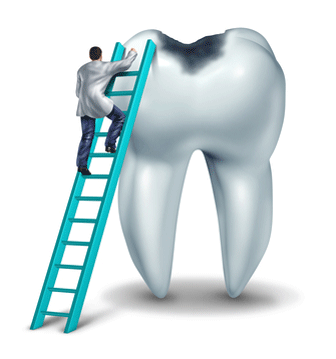What role does the Dental Aptitude Test play for a career in dental healthcare?
The Dental Aptitude Test, or DAT, is a test that is compulsory for all students wanting to have a career in dental healthcare. The test is broken up into some sections, as you will see. You will also learn here what academic subjects are essential when applying to dental schools.
What does the Dental Aptitude Test comprise?
The Dental Aptitude Test (DAT) is three parts written examination.
The first part of the exam is referred to as Reading Comprehension. This part of the test is relatively straightforward. It is, however, very intense too. Abbreviated to the DAT, the Dental Aptitude Test is often confused with the Dental Application Test, which also has the acronym DAT.
The Reading Comprehension part of the Dentistry Aptitude Test takes precisely an hour to sit. The format of the paper is based on three individual articles, each with sixteen or seventeen similar questions attached. This will total fifty items in total. The materials will be predominantly science and technology-based.
The type of questions will cover the need for you to identify specific details or to ascertain if you understand the central concept of the document. Additionally, you may have to make inferences from the text or explain what part of the book is trying to achieve.
The second part of the Dental test is the Academic Average. The importance of science in the field of dentistry makes this a biased requirement in overall academic excellence. While there will be other educational prerequisites, the Academic Average underlines a candidates ability to apply their scientific knowledge.
The final part of the DAT covers perceptual ability. A Perceptual Ability Test (PAT) is intended to assess spatial visualization skills. It often involves having to interpret a two-dimensional image of a three-dimensional object. This is appropriate for dental students who have to imagine two-dimensional x-ray results in a three-dimensional setting.
Like the Reading Comprehension section, the DAT also lasts an hour. The test is split up into six separate topics, each with fifteen questions in it. As you will now realize, a speed of thought is crucial to tackling the DAT successfully. To give you a more precise understanding, I shall briefly outline the six individual sections of the Perceptual Ability Test for the Dental Aptitude Test.
Cube counting involves taking some cubes to make a more massive object. That object is painted on all sides except the base. Cube counting involves itemizing how many cubes have what faces painted when the larger model is dismantled. Angle ranking involves merely placing four angles in increasing order of size.
Hole punching involves imagining a piece of paper which has been folded between one and four times. A hole or holes are punched in it. Your task is to identify where those holes will be when the sheet of paper is unfolded. Pattern folding involves taking a two-dimensional pattern and visualizing it when folded into a three-dimensional form.
Top-front-end will show you two views of an object from different angles. You will be required to identify the third view from a selection given. Finally, there are keyholes. Here you have to work out which three-dimensional object will pass through a specially shaped hole in a wall.
How important is the Dental Aptitude Test?
You cannot enter dental school without doing well in your Dental Aptitude Test. However, the weighting associated with your DAT is only 15% of the overall requirements to be accepted into a course. In other words, you have to pass the test. However passing the test does not guarantee you admission to dental school.
There is another type of academic average that counts for 65% of the weighting of your application to dental school. This covers your previous academic achievements and grades achieved. This is basically why you worked so hard to get those grades. Because it is dentistry, the academic average required is very heavily biased towards good results in sciences.
Chemistry and biology are two crucial subjects where you need to get good grades. Mathematics and physics are also appropriate subjects. In US and UK colleges and universities, a high standard of English is required. As a result, non-native English speakers also have to have sufficiently high passes in such courses as TEOL and TEFL.
The final part of your approval process for admission to dental school is the interview. This is yet another part of the admissions process where you have to do well. The level of weighting placed on the interview is 20%. As a result and like the Dental Aptitude Test, practice is recommended.
Share Your Thoughts!
We find value in differences between learning, interpreting and overall opinions. Please share your thoughts freely about this topic, but always remain respectful. You can preview and edit on the next page before your submission is sent in. You will also be informed about this site's privacy policies.
Thank you for your contribution.
Recent Articles
-
What type of test did I take
Apr 04, 22 04:09 AM
I was given a psychological test years ago, but wasn’t told what it was for. The rating used a bell curve and my score fell in the above average not yet -
ﹰﹰﹰﹰﹰﹰﹰGOOD
Aug 13, 21 03:20 PM
Since the enneagram test helps people to understand their strength and weaknessess. And helps them remove their weaknesses then the test is good -
Knowing the inner me
Aug 13, 21 03:17 PM
Sometimes I ask myself that is this my behaviour or not? Because I am really shy and I lack confidence, I find it hard to socialize with other people.I

